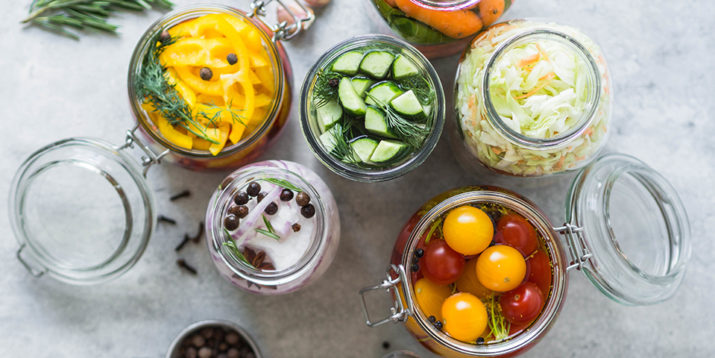Learn How to Pickle Vegetables at Home

There’s nothing like the crisp crunch and tart zing of pickles. But have you ever had a homemade pickle? If you don’t know how to make pickles, you’re in luck.
Learning how to make pickles is easy and pickling is a great way to get a powerful punch of flavor out of veggies.
Since pickling adds flavor, “it can be a delicious way to eat more vegetables,” notes Chelsey Amer, M.S., R.D.N., owner of Chelsey Amer Nutrition.
“Eating more vegetables adds more vitamins, minerals, and antioxidants [to your diet] to support your overall health,” she adds.
Interested in dipping your toe into pickling vegetables? It’s as easy as following the five steps below:
1. Choose your vegetable(s)
We commonly use the word “pickles” to describe pickled cucumbers, but they’re far from the only veggies that hold up to this preparation.
“Your pickling options are as endless as your imagination,” says Lindsey Janeiro, R.D.N., of Nutrition to Fit.
She suggests you try popular options such as onions, carrots, jalapenos, bell peppers, radishes, green beans, beets, and asparagus.
Even softer produce like tomatoes can be pickled.
It’s important to pick your veggies ahead of time because it will impact what type of brine you use (more on that in a minute).
Pro tip: If you bought too much produce and don’t want to waste it, pickling is a simple way to extend its life.
2. Prep your veggies and pack them into glass jars
Larger pieces or whole vegetables (like radishes) will take longer to pickle, so prep your veggies accordingly.
You might shred or slice carrots and cucumbers if you want to eat them today, but you could keep them whole if you aren’t in a rush.
You’ll want to pack your vegetables in pretty tightly, but make sure you have an inch at the top of each jar.
This space allows you to fully submerge your vegetables in the brine so they can soak up maximum flavor.
Make sure you have a tight-fitting lid so that they can be kept safely in the fridge and resealed between servings.
3. Choose your vinegar and spices
“Adjusting the spices and fresh herbs you add to a basic pickling recipe easily changes the flavor of your pickle recipe,” says Amer.
She suggests trying fresh garlic, rosemary, thyme, oregano, or dill.
Janeiro notes that generally, there’s some salt and a sweetener in pickle recipes, though you don’t need to add sweetener if your taste buds prefer sour to sweet.
Overall, she says you should “just have fun and experiment with your favorite flavors and herbs.”
Even then, you’re still not out of options for personalizing your pickles to your own unique tastes.
Choosing a different vinegar is another way to alter the overall flavor profile of your pickled vegetables.
Amer suggests trying apple cider vinegar, rice vinegar, red wine vinegar, or white vinegar. Aim for a ratio of 1 part vinegar to 2 parts water.
4. Add your brine to your jars
Them, all you need to do is add your brine (the mixture of salt, dried herbs and spices, and vinegar) to your jar(s).
Follow food-safety guidelines any time you pickle vegetables, and make sure every piece is fully submerged in the brine.
5. Let the flavor develop
Give your pickles at least three hours to sit in the fridge, mingling with the spices and vinegar.
These are “quick pickles,” so they’re ready relatively quickly but still punch up a wide variety of dishes (like our quick pickled red onions).
Let them rest longer in the fridge to allow more infusion of flavor.
This isn’t an either-or situation, though. You can pack a huge canning jar with pickles, enjoy some that evening as “quick pickles,” then let the flavor develop over the next few days.
Either way, quick pickles like these need to be kept refrigerated — and eaten within two weeks.
Want more expert nutrition advice? Check out BODNutrition.com and learn how BODi nutrition programs and products can help you lead a healthier lifestyle.



